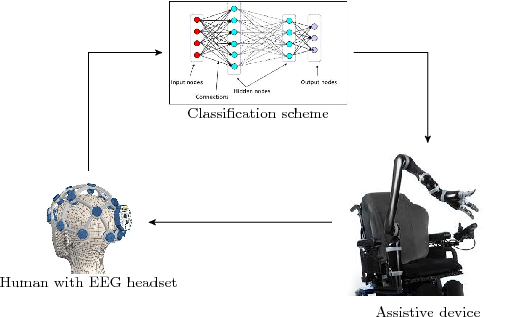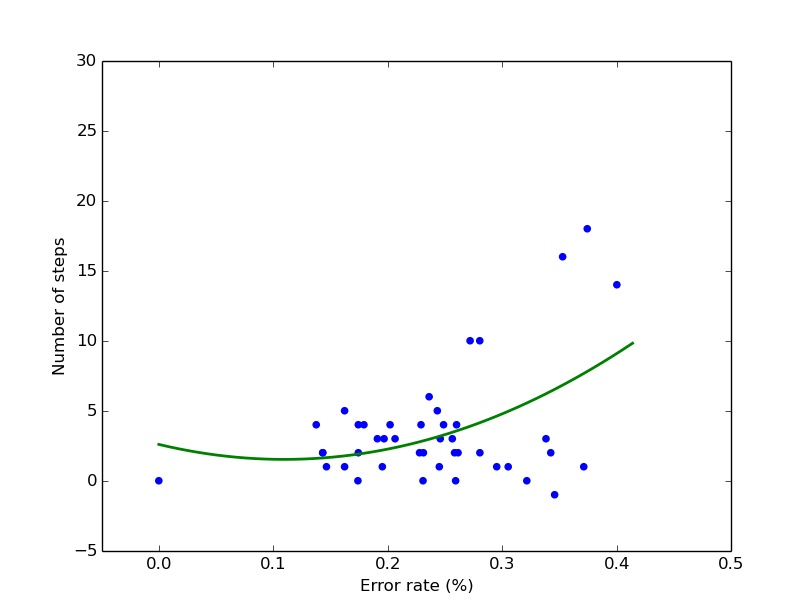Control of assistive devices using brain-computer interfacing
In finite state spaces, the optimal way to complete a task will imply an expected spatially related pattern of the class labels. This spatial pattern suggests that Probabilistic Graphical Models may be useful in identifying classification errors.
We create a Markov random field out of an observed sequence of class labels, and design an efficient algorithm to identify misclassifications with high reliability.
Experimental validation:
We plot the number of time-steps that would be saved when trying to identify the goal using our algorithm (compared to using labels as-is) vs the percentage of erroneous labels in each trial. Our algorithm provides a benefit in terms of identifying the goal (with some threshold of confidence) faster than when using the class labels as-is. The benefit is larger when the error rate is high.

